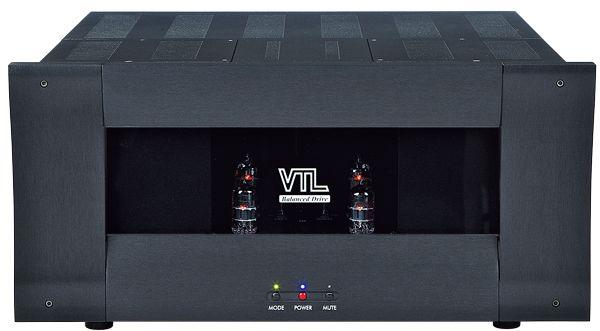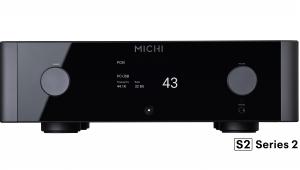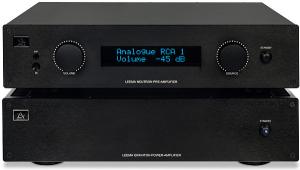Vtl S 200 Signature (£11,500 With 6550 Tubes; £11,700 With Kt88s)

When running, the tubes can be seen discreetly glowing through the smoked glass front window. (Our sample was fitted with KT88s, an option that adds £200 to the price.)
As the ‘Balanced Drive’ wording on the glass proclaims, there is a fully-balanced differential input stage, feeding a phase-splitter which drives the push-pull output stage. In this dual-mono layout, the two small tubes at the front are 12AT7 (or ECC81) double-triodes for the input stages, and behind them is a pair of 12BH7 double-triodes for the left and right driver or phase-splitter stages.
Nestling between those driver tubes are the two small toggle switches for VTL’s variable damping factor control, an innovation common to several Reference Series and Signature Series models that adjusts the level of negative feedback around the output and driver stages, altering the amplifier’s output impedance and damping factor. Low offers ‘the least loudspeaker control, and the most natural sound’. (Med and Hi positions increase the feedback in 2dB steps.)
When powered up, the internal logic system checks that everything is in order and, behind the glass front, a sequence of green LEDs indicate the amp is in standby. To go from standby to operating mode, you touch the centre Power button. A Mode LED will indicate whether the amplifier was last set for tetrode or triode operation; it also comes into play with VTL’s fault sensing system.
Triode mode wins
By chance, the disc sitting in our player was Remembering Big Bill Broonzy [Beat Goes On Records], a 1951 mono collection. The amplifier was running in the normal tetrode mode, so we couldn’t resist testing out the triode. And this was something else… Now there was an even freer and more natural quality to the music, a real feeling that you were hearing a performance.
With Zoe Rahman’s 2007 album Live [Manushi], recorded at the Dean Street Pizza Express, we again preferred the triode sound, which seemed to give a truer impression of the piano and the acoustic.
The DF switches at the Mid position were deemed appropriate for the B&W speakers in use, but setting the switch to Low produced one of those jaw-dropping moments, where a sound that we’d already thought was excellent became even better.
With Patricia Barber’s ‘Snow’ from The Cole Porter Mix [Blue Note] we heard more depth, and a greater sense of three-dimensional presence from Barber herself when singing, while Neal Alger’s beautiful guitar had a yet more luscious and mellow presence.
After that, on practically every recording tried, the VTL amplifier brought unexpected pleasures. It could bring out the best in a silky-smooth audiophile offering – like the Mozart Clarinet Concerto with Musical Fidelity boss Antony Michaelson as soloist, engineered by Tony Faulkner in the acoustically favourable Henry Wood Hall. Here the VTL was gorgeously light, airy, and spacious with a truly delightful string sound and a beautifully clean and open bass end.
Verdict
This well thought-out design brings all the benefits of glowing ‘bottles’ with hardly any of the headaches. To say that the VTL gave fresh insights to everything played wouldn’t convey what this amplifier does. Put simply, the S-200 offers endless musical enjoyment.
Originally published in the 2014 Yearbook

























































